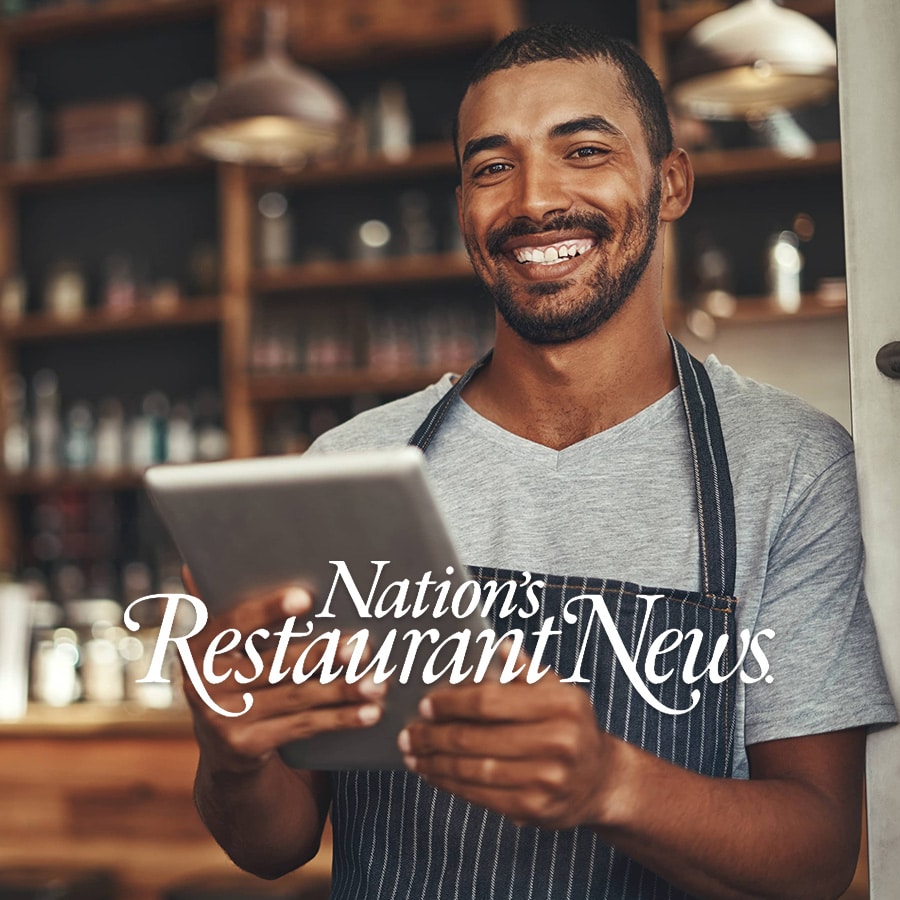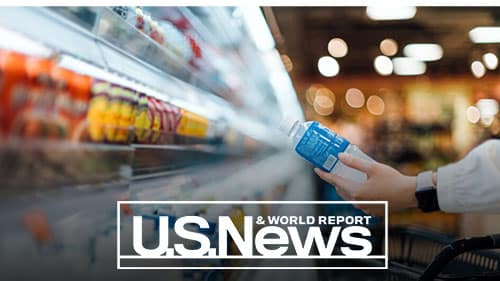You’ve reopened your dining rooms at the allowable capacity in the geographic areas of your restaurant locations. You followed all the new health and safety regulations. Now it’s time to refocus on your bottom line. This requires not only increasing total sales, but also reducing costs. Understanding how to decrease controllable costs – food and labor are the big two — helps you drive operational improvements that can increase your financial outcome.
While these are not optimal times in the restaurant industry, there are tactics you can implement now to both increase sales and optimize your controllable costs. Use these 10 tactics to improve your profit margin during these uncertain times and ensure you’ll reach a break-even point.
1. Reevaluate your supply costs
One cause for rising CoGS might be because your suppliers have increased prices on your ingredients. If a particular ingredient has gone up in price, you may want to seek a different supplier, try negotiating a lower contract price with your current supplier. If your supplier is not willing to reduce the price, then compare costs with other suppliers. An advanced, restaurant-specific inventory management system can identify pricing errors. While your supplier relationships are important, you also have to consider your profit margins.
You can catch pricing irregularities using AP Automation and integrated receiving reports. With integrated receiving, AP automation technology catches precise data, such as vendors straying from contracted prices. Beyond invoice processing and payment, AP Automation also allows you to see real-time and long-term insights into food costs.
2. Cost out your menu items and recipes
Beyond achieving specific sales goals, your restaurant’s viability also requires that you meet specific cost targets. The first step to projecting a food cost target is to create a master inventory list and then price every ingredient you purchase. Using the master inventory list, you can then calculate the cost of every recipe and menu item for comparison with the selling price of the menu item.
Track usage and yield from each food item to get an accurate cost on recipes. With the right tools, you can save time by automating this process. Advanced inventory management software can import menu items from your POS, then map them to recipes.
Menu costing doesn’t have to be a time consuming and costly process. Some POS systems calculate food cost and profit for specific menu items within the system. If your POS system doesn’t offer that capability, then pull the POS data into your restaurant accounting software and inventory management system, which does the calculations for you.
3. Compare actual vs. theoretical food costs to optimize spending
Knowing the difference between what you spend on food versus what you should spend on food in a given period can help you implement efficiencies in inventory control. This is known as the gap or variance between your actual vs. theoretical food costs. Any negative variance represents lost profit.
A restaurant management platform that allows you to accurately and automatically measure your food cost variance points you toward where you should focus first in your inventory control. Automated actual vs. theoretical food cost reporting maps recipes to your POS menu item to track your actual and theoretical usage over time. Once you identify the gap, you can streamline troubleshooting activities like addressing waste, errors, portioning mistakes, and theft. With accurate, real-time data reporting, you can optimize your response and grow your profit margin.
4. Promote your highest gross profit menu items
Higher margin menu items can mean more restaurant profit margin. For example, high-cost entrées such as those featuring steak or fresh seafood have a high food cost but usually bring in high profit. Selling more pasta dishes will lower your food costs but will most likely result in lower profits. Remarkably, many restaurant operators don’t know the margins on each of their menu items. If you’re not breaking down every item on your menu to its individual ingredients in order to determine exactly how much it costs to make, then you’re missing out on opportunities to sell your most profitable menu items. Maybe that steak entrée isn’t netting as high a margin as you thought. Conversely, that inexpensive pasta dish could become a higher margin item with the addition of shrimp or lobster.
This process, known as menu engineering, maximizes revenue by helping you determine the most profitable menu items so that you can subtly encourage customers to buy what you want them to buy. Menu engineering helps you make informed, data-driven decisions about popularity versus profitability. With a menu item analysis, you can determine the profitability and popularity of each of your menu items. A menu item analysis requires first costing out your menu items and recipes. You can see whether menu items are overpriced or underpriced, based on their food costs, and make decisions about revising portions or recipe ingredients. You can then leverage new menu opportunities to promote menu items that are high margin but low in sales.
5. Review cost of goods sold daily
Cost of Goods Sold (CoGS) is the combined costs of food and beverage ingredients that were sold at your restaurant over a certain period of time. A daily review of your CoGS will make your restaurant managers aware of issues such as waste, theft and portioning mistakes so that they can take immediate action.
CoGS totaled takes into account the ingredients that make up your food and beverage sales, and related supplies (such as napkins and takeout containers).
Because CoGS tracks ingredients, an accurate CoGS number depends on accurate inventory management figures in the equation below:
Starting Inventory + Additional Purchases – Ending Inventory = COGS
Daily food costing can result in significantly reducing your CoGS.
6. Optimize labor by understanding sales forecasts by day part
Most restaurants are currently operating reduced hours. For example, commuting is down due to increased working from home which has led to industry-wide decreases in breakfast. Consequently, you’ll need to consider how minimized hours will affect your forecast, not just on a daily basis, but by day part. Basing your forecast on a reduced number of hours will help you make difficult decisions about how many employees you should have in house during each day part.
Another way to save is to run a daily report that calculates labor costs as a percentage of revenue as well as sales per labor hour (SPLH). This allows your store managers to make scheduling changes based on this feedback to improve your labor percentage. Gathering and analyzing your labor data allows you to create effective scheduling strategies for labor cost control by leveraging labor allocation in relation to customer demand.By accessing average sales data from your POS and projecting that data forward over time, you can also create forecasts. When creating forecasts, analyze past labor costs by daily and hourly trends, not just weekly trends. Effective scheduling is dependent upon analyzing your labor data and scheduling accordingly.
You can run a report in your accounting system once the numbers are pulled from the POS system showing sales generated or customers served for every hour of labor expended. Sales per labor hour (SPLH) or customers served per labor hour are key indicators of productivity. Low SLPH could indicate scheduling problems. Similarly, a high SPLH doesn’t always mean optimized labor. It could mean there weren’t enough employees scheduled which led to a poor customer experience. Make sure to look find the SLPH that works best for your restaurant. Consequently, it’s important to find the optimum levels for your unique restaurant and meal periods to ensure maximum productivity.
7. Forecast by revenue center
Monitor takeout and delivery sales since the beginning of restaurant restrictions to identify trends, and then leverage that information to predict future sales. POS data integrated with your restaurant accounting software is especially important to forecast sales revenue, allowing you to adjust costs as needed and create strategies to meet your business goals throughout your recovery. By analyzing this data you can make smart decisions about labor hour allocation for the delivery and takeout segments of your business.
Dine-in forecasting is limited to how many people are allowed in your dining room. Making sure you’re considering how many seats are available for dine in is going to drive a smarter forecast. If your dining room is not yet open, an easy way to generate your first dine-in forecast is to look at what a 25% capacity in your dining room looks like. Look at the number of seats you can book against your check averages and then do some simple math based on how many turns you anticipate you’ll get out of the dining room. In creating your dine-in forecast, you must also consider whether your check average will be the same as it was pre-COVID, or if it will be reduced based on a limited menu. If your dining room is already open, your forecast may be a hybrid of the above method and using historical sales since your dining room reopened.
You should use both the day part and the revenue center segments when you start building out your forecast for the initial period after reopening your dining room. Consider using restaurant management software integrated with your POS data to automate the forecasting process.
8. Use data-driven scheduling
Use your forecasting data to create smarter schedules. Advanced scheduling software integrated with sales data provided by your POS system, enables you to calculate your optimum sales and number of customers served per labor hour. Your sales per labor hour (SPLH) is a key indicator of productivity. With restaurant technology forecasting busy and slow nights, you can then schedule staff while keeping your SPLH percentage goals in mind.
For busy periods, one of the best labor cost strategies is to leverage your most effective employees. For example, by scheduling servers with the highest average sales during your peak hours, you can optimize operations. Identifying the top revenue and sales generators can help you recognize and reward employees who are doing well, as well as improve your margins on labor. Restaurant accounting software can provide reports on your top revenue generators by analyzing data from your POS system.Controlling total labor costs is dependent upon on closely monitoring the relationship between your labor and your sales. You can adjust labor in real time based on how the day is unfolding in terms of sales by aggregating sales data from your POS on an hourly basis. This technology – known as intraday polling – enables you to make hourly labor decisions based on the amount of current sales to reach optimal labor performance.
9. Continue promoting your takeout and delivery services
If you successfully pivoted to takeout and delivery only during the dine-in restrictions, but are now seeing that business fall off, now is the time to promote your off-premise offerings. While your recent efforts may have been more focused on opening your dining room and serving those dine-in guests, it’s important to continue those off-premise revenue streams by promoting those channels while your dining room is not at full capacity and many diners are still not comfortable dining in at restaurants.
Offer promotions for takeout and delivery on social media. Update your local listings, such as Google My Business, to ensure that customers know you’re open for dine in, takeout and delivery. Ask your takeout and delivery customers to post reviews online about their experience and include photos of their takeout orders, and also offer incentives and rewards for their feedback.
Don’t forget the alcohol. In a recent survey by the National Restaurant Association, 89% of restaurants now offer alcohol with takeout and delivery orders, and those beverages represent 10% of off-premises sales. While only 28% of those restaurants are located in jurisdictions that allow on-premises dining, if you’re not selling and promoting alcohol with your off-premise orders and it’s allowed in your restaurant locations’ jurisdictions, you may be losing sales to your competitors who are offering and promoting alcohol sales. Learn more about marketing your restaurant during uncertain times.
10. Add digital gift cards to your gift card offerings
Digital gift cards are an excellent tool for consumers to share your restaurant’s meals with family and friends while they’re practicing social distancing. It also introduces your restaurant to potential new customers.
Additionally, digital gift cards are being used for more than gift giving in today’s current health-conscious climate. Many consumers are buying digital gift cards for themselves as a means for contactless payment.
Digital gift cards are easy for consumers to redeem and for employees to process, especially if your gift card technology is integrated with your (POS) system. They’re an additional tool to encourage new and existing customers to come in or order takeout from your restaurant.
Conclusion
Improving your financial picture during this uncertain time depends on various factors. While increasing sales is key, limited capacity and other restrictions requires that you use creative ideas like menu engineering to increase check average and increase profit margin, as well as focus on decreasing costs. Improving efficiencies in inventory management and labor will help to lower overall operational costs and increase your bottom line.
Restaurant365 is an all-in-one, cloud-based restaurant management solution that integrates restaurant-specific accounting, inventory management and employee scheduling to help you run your restaurant business more efficiently and profitably. To learn more, schedule a Restaurant365 demo today.



